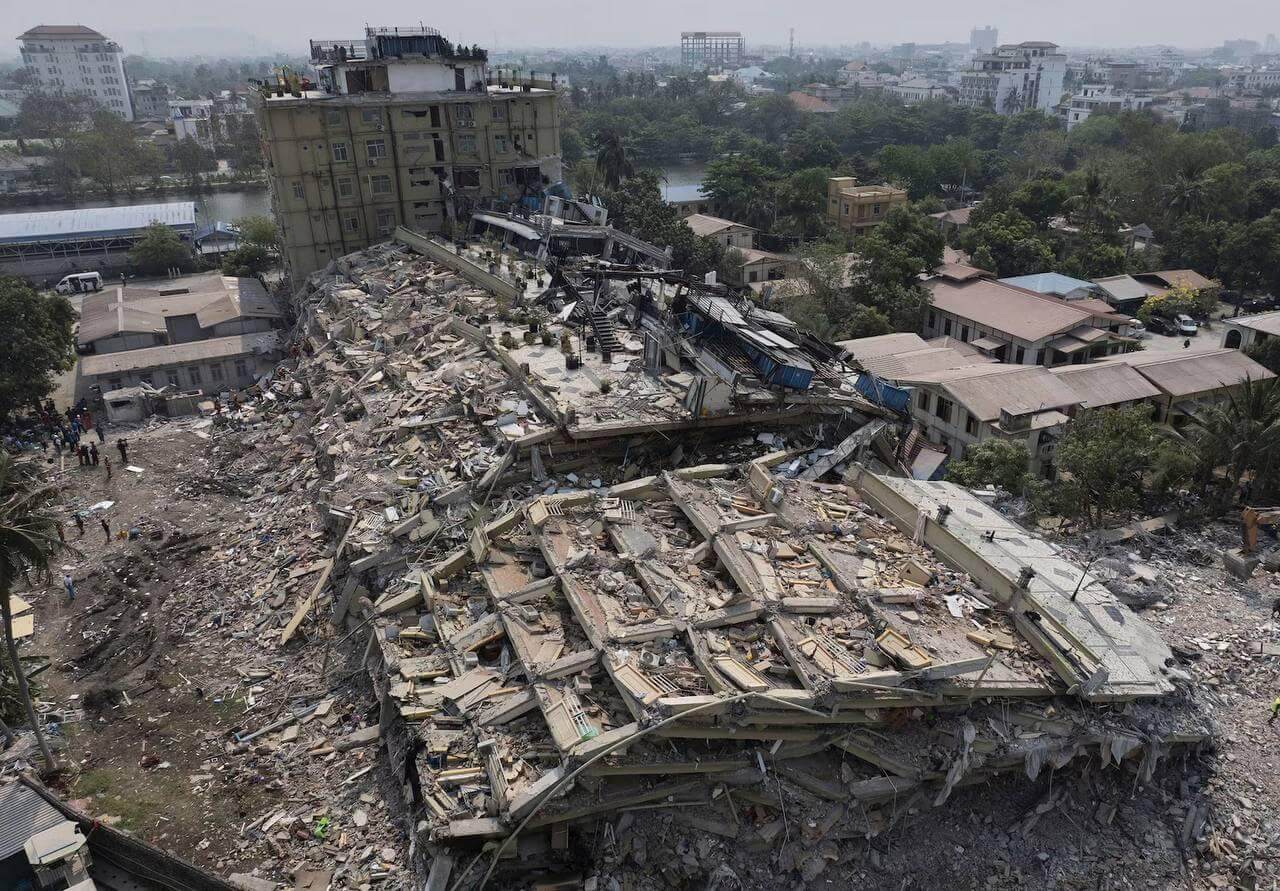Weekly Freshups

Earthquake in Myanmar – A Devastating Seismic Event

Date: Friday, 28th March
A massive 7.7 magnitude earthquake struck Myanmar near Mandalay, marking the most powerful quake since 1912 and the deadliest since 1948.
Impact and Devastation
- The Sagaing Region faced widespread destruction.
- Buildings and bridges collapsed, and a skyscraper fell in Bangkok.
- Over 1,000 fatalities reported; toll may exceed 10,000.
- 1,600+ injured; national emergency declared.
- Tremors felt in India, Bangladesh, and China’s Yunnan province.
Geological Background
Myanmar is at the convergence of four tectonic plates:
- The Indian Plate
- The Eurasian Plate
- The Sunda Plate
- The Burma Microplate
Earthquake-Related Short Questions & Answers
1. What is an Intraplate Earthquake?
Answer: An intraplate earthquake occurs within the interior of a tectonic plate, not at plate boundaries.
Examples: Gujarat (2001), Christchurch (2011), Indian Ocean (2012), Puebla (2017), New Madrid (1811–1812), Charleston (1886)
Examples: Gujarat (2001), Christchurch (2011), Indian Ocean (2012), Puebla (2017), New Madrid (1811–1812), Charleston (1886)
2. What does the Earth’s crust consist of?
Answer: Seven primary tectonic plates, eight secondary plates, and dozens of microplates.
3. More examples of Intraplate Earthquakes?
Answer: Mineral, Virginia (2011), Newcastle (1989), Cape Ann, Charleston (1886)
4. What type of earthquake devastated Gujarat in 2001?
Answer: A large intraplate earthquake.
5. What is an Epicenter?
Answer: The point on Earth’s surface directly above the earthquake focus.
6. What is the primary purpose of a Seismometer?
Answer: To locate the epicenter and determine the earthquake’s magnitude.
7. What are the different types of waves in Seismograms?
Answer: P Waves, S Waves
8. What is a P Wave?
Answer: A fast-moving seismic wave that arrives first.
9. Through which mediums can P Waves travel?
Answer: Solids, liquids, and gases.
10. What is an S Wave in Seismology?
Answer: Transverse waves that travel perpendicular to propagation direction and cannot travel through liquids.
11. What are the three types of seismic waves?
Answer: P Waves, S Waves, Surface Waves.
12. What is a Shallow Earthquake?
Answer: Occurs at a depth of 0 to 70 km and causes significant surface damage.
13. What are the three main types of earthquakes?
Answer: Tectonic, Volcanic, Collapse Earthquakes.
14. What is the largest earthquake ever recorded?
Answer: 1960 Chile Earthquake – Magnitude 9.1
15. Where can earthquakes occur?
Answer: Anywhere from the surface to 700 km deep.
16. Where do shallow earthquakes originate?
Answer: Generally 5 to 10 km below the surface.
17. What are the three zones of earthquake depth?
Answer: Shallow (0–70 km), Intermediate (70–300 km), Deep (300–700 km)
18. What does a 7.8 magnitude earthquake mean?
Answer: Releases 15.9x more energy than a 6.0 magnitude quake. The Richter scale is logarithmic.
19. What is a Deep-Focus Earthquake?
Answer: Occurs deeper than 70 km. First identified in 1922 by H.H. Turner.
20. Who developed the Richter Scale?
Answer: Charles Richter and Beno Gutenberg.
April 8, 2025
Recent Posts
Archives
- April 2025 (12)
- March 2025 (4)
- January 2025 (1)
- December 2024 (17)
- November 2024 (30)
- September 2024 (1)
- August 2024 (1)
- June 2024 (2)
- May 2024 (1)
